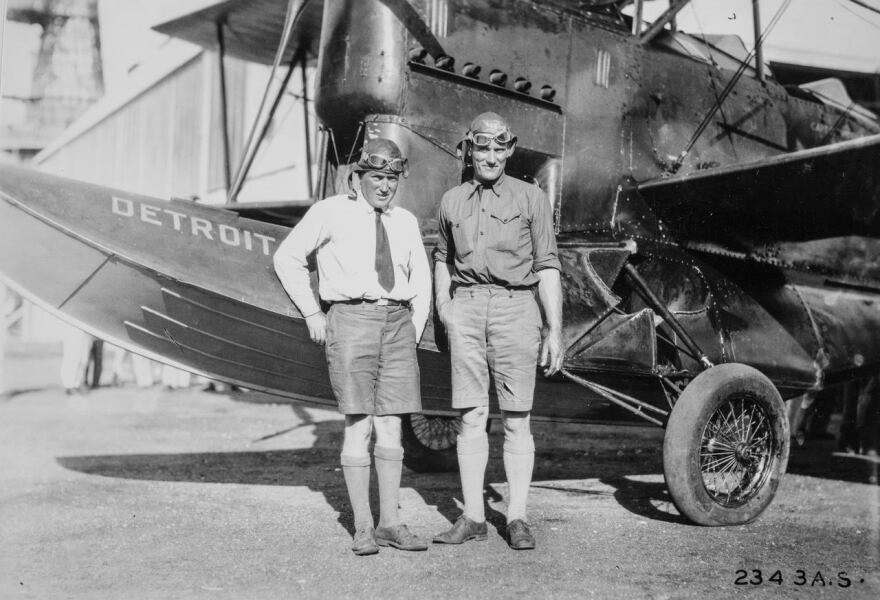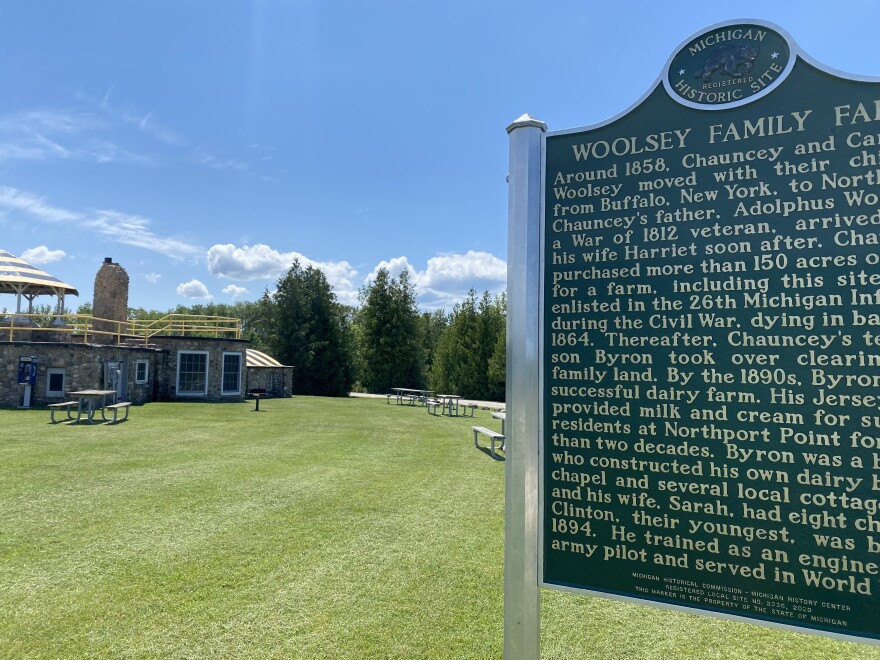At the very end of Michigan's “pinky” sits the Woolsey Airport.
It’s named for an early aviator whose actions in the 1920’s inspired his father to donate the land to create an airport.
This week, a historical marker went up to tell their story.
Clinton Woolsey grew up on a dairy farm in Northport. He was the youngest of 8 children and was the only boy.
“And so I think he was probably slightly spoiled and allowed to do whatever he felt like doing.” Says grand niece Lynn Contos, “One of the things he felt like doing was trying to make his own gunpowder out in the barn. I don’t know if he blew up anything or got caught before that happened, but he was always interested in things like that.”
An interest in how things work took Clinton to Valparaiso University where he earned an engineering degree.
After college he joined the military, serving in the national guard. It was 1916.
A few years later when he was sent to Camp Taylor, he was introduced to planes and fell in love.
“And so that was all they wrote,” Says Lynn. “From then on, that's what he knew he needed to do.”
Planes hadn’t been around that long. The Wright brothers flew their first plane near the turn of the century. Clinton was such an early aviator that his pilot license was signed by one of the Wright brothers.
In 1926, Clinton was called to participate in the Pan-American Good Will flight, says author Tom Wilson.
“The Europeans were making inroads into South America, and they wanted to be able to build up the U.S. influence more,” Wilson says. “Also, they wanted to establish what would be commercial routes for commercial airlines which didn’t really exist at that point.”
10 experienced pilots were selected for the Good Will flight.
Wilson says Clinton was likely chosen for his military service and engineering experience.

The flight to South America was dangerous. Internal combustion engines were not really reliable machines at the time, and other factors also made this flight difficult.
“[There was] no weather prediction like we have today,” says Wilson, “So you were just looking out into the sky and hoping the weather didn’t get bad on you.”
There was no radio at the time, so the pilots used hand signals to communicate.
“You were flying in an open cock-pit airplane, so you were being battered by the wind.”
If that wasn’t enough, because the planes needed to be able to land in water, the engine was upside down.

Regardless of the challenge, Clinton and his co-pilot along with four other planes took off. It was December 1926. They were going 85 to 90 miles per hour and the journey was a 22,000 mile round trip.
Two months into the journey, something went wrong.
On February 26th, they were preparing to land in Buenos Aires when a gust of wind caused the plane Clinton was piloting to collide with the wing of another plane.
The pilots from the other plane were able to pull their parachute and float to safety, but Clinton had a dilemma.
“Clintons co-pilot was out on the wing because they had discovered at a previous landing that they had a problem with their landing gear,” says Tom, “He was trying to manually lower the wheels so they could come in for a landing, so when all this transpired, his co-pilot was out on the wing.”
The plane was crashing. Clinton could either pull his parachute and abandon his co-pilot to certain death, or he could try to land the plane without the wheels, with his co-pilot still on the wing.
He decided to attempt a landing.
They both died in the crash.

Clinton was honored posthumously with the Distinguished Flying cross.
And his father, Byron Woolsey, lost his only son.
“I think he was so devastated,” Says Byron's great granddaughter, Lynn Contos, “That's what made him think of giving this airport to honor his son.”
Shortly after Clinton’s death, Byron had the idea to create an airport in his son's honor.
He donated the stone creamery he built himself and 80 acres of his dairy farm to Leelanau township for the airport.
The township was so excited by the proposal they donated an additional 120 acres to make the Woolsey Airport a reality. It's still a working airport with two runways.
And now, a historical marker is being added to the site. On one side of the marker is Clinton’s story of the Pan-American Flight and the other side shares the history of the Woolsey family and dairy farm.

Getting this historical marker means a lot, Lynn said through tears.
“So amazing”
A dedication of the marker is happening Wednesday July 14th, at noon.


